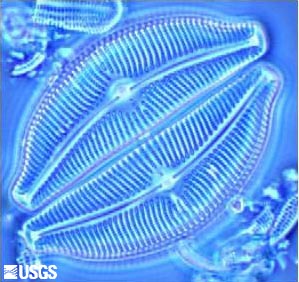- Home
- About S&T
- Taxa/Organisms
- Ecosystems
- Issues
- Methods & Tools
- Reports & Publications
- Location
- Search
Publisher: USGS | Science Center: Leetown Science Center (LSC, Kearneysville) | Format: URL
www.lsc.usgs.gov — This is a research project whose primary objective is to assess the health of selected fish species (brown bullhead and largemouth bass) and compare these findings with historic information on fish health in the individual rivers and with concurrent samples collected at reference sites. A secondary objective is to compare and correlate the fish More...

September 2008 | Publisher: USGS | Format: URL
pubs.usgs.gov — Water is among Florida's most valued resources. The State has more than 1,700 streams and rivers, 7,800 freshwater lakes, 700 springs, 11 million acres of wetlands, and underlying aquifers yielding quantities of freshwater necessary for both human and environmental needs (Fernald and Purdum, 1998). Although renewable, these water resources are More...

Publisher: USGS | Science Center: Western Fisheries Research Center (WFRC, Seattle) | Format: URL
wfrc.usgs.gov — Mercury contamination from historic gold mining operations is widespread in many rivers, lakes, and reservoirs on the western slopes of the Sierra Nevada. A multidisciplinary investigation by USGS is attempting to better understand mercury dynamics and to identify hot spots within Camp Far West Reservoir in order to determine if remediation More...

Publisher: USGS | Science Center: Western Fisheries Research Center (WFRC, Seattle) | Format: URL
wfrc.usgs.gov — Lake Natoma, an 8,760 acre-feet reservoir on the American River, is managed by the U.S. Bureau of Reclamation (USBR) for multiple uses that include fishing and other water-based recreation. Preliminary results from 22 fish samples collected in Lake Natoma during August 2000 indicate that the mercury content may approach or exceed guidelines for More...

Publisher: USGS | Science Center: Columbia Environmental Research Center (CERC, Columbia) | Format: URL
www.cerc.usgs.gov — The BFRS works cooperatively with team members from CERC and with faculty and graduate students of Department of Wildlife and Fisheries Sciences at Texas A&M University in research areas represented by the branch structure of the CERC including toxicology, ecology, biochemistry and physiology, environmental chemistry, ecogeography, and information More...

Publisher: USGS | Science Center: Contaminant Biology | Format: URL
biology.usgs.gov — This web page lists databases related to contaminant research across government agencies and partnerships. Many of the links include access to documented trends in the occurrence of persistent toxic chemicals that may threaten fish and wildlife resources, summaries of the results from aquatic acute toxicity tests, Avian Incident Monitoring, More...

Publisher: USGS | Science Center: Western Fisheries Research Center (WFRC, Seattle) | Format: URL
wfrc.usgs.gov — Artificially maintained water levels within the lake and stresses placed upon the aquifer by well withdrawals facilitate movement of water from the lake into the local ground water system, potentially allowing contaminants to enter the aquifer from the lake. This raises national concern because similar lakeside settings exist throughout the United More...

Publisher: USGS | Science Center: Western Fisheries Research Center (WFRC, Seattle) | Format: URL
wfrc.usgs.gov — There are approximately 500,000 abandoned mines in the western US. Collectively, these mines pollute rivers, streams, and western reservoirs with millions of tons of metals annually that degrade aquatic habitat and water used by humans for drinking, recreation, and irrigation. However, there is great potential in decreasing or eliminating the flow More...
